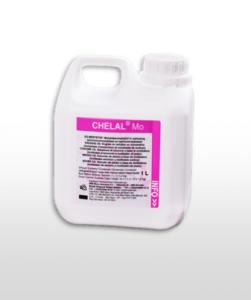You are here

Chelal Mo
 STRAIGHT INORGANIC MICRONUTRIENT FERTILISER, Micronutrient solution fertiliser, Micronutrient fertiliser, 6,3 % Mo (sodium molybdate)
STRAIGHT INORGANIC MICRONUTRIENT FERTILISER, Micronutrient solution fertiliser, Micronutrient fertiliser, 6,3 % Mo (sodium molybdate)
Its unique formula gives to CHELAL® Mo a very high stability in the soil solution.This guarantees a maximum plant availability and an optimum absorption by both leaf and root. Using CHELAL® Mo is most effective in young plants.
CHELAL® Mo:
- increases nitrogen fixation in leguminous crops.
- decreases nitrate-accumulation in the crop.
- enhances protein synthesis.
- decreases the amount of free amino acids in the plant.
- increases chlorophyll-content.
CHELAL® Mo is miscible with most pesticides and herbicides. Avoid mixing with oilbased products. It is advisable to conduct a miscibility test before application. In case of doubt, consult our technical service.
Do not exceed the maximum concentration of 0,3 % (= 0,3 L CHELAL® Mo in 100 L water). Maximum concentration in greenhouse : 0,3 % (= 500 cc in 100 L water). For foliar applications avoid high temperatures and bright sunshine. Treat preferably during early morning or late evening.









